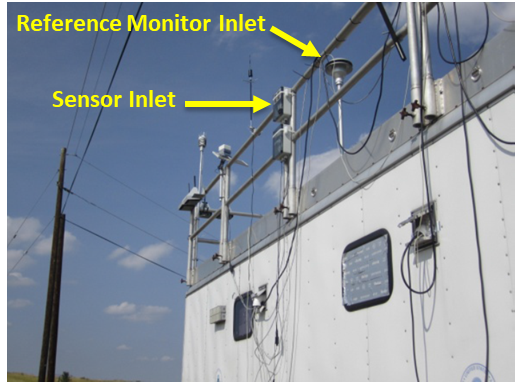Air Sensor Collocation Instruction Guide
EPA's Collocation Instruction Guide is a resource designed to help air sensor users learn the importance of collocation evaluation and the steps required to conduct a successful collocation. This process will assist users in understanding the data produced by air sensors in comparison to regulatory-grade monitors.

The availability of air quality sensors makes it possible for individuals, communities, researchers, and others to collect their own air quality data. While air sensors can measure many of the same air pollutants that costlier, well-characterized regulatory monitors measure, they are often used for non-regulatory applications, which do not necessarily require the same rigorous standards of accuracy and reliability. Collocation and comparison of sensor data with collocated Federal Reference Method/Federal Equivalent Method (FRM/FEM) regulatory monitor data is a necessary first-step to understand the accuracy of the data produced.
Collocation refers to the process of operating a regulatory grade reference monitor (FRM/FEM) and non-reference monitor (air sensor) at the same time and location under real-world conditions for a defined evaluation period. Collocating air sensors with regulatory monitors can help users evaluate the accuracy of their sensors by comparison of the two data sets.
EPA's Collocation Instruction Guide is designed to be a step-by-step guide to this process. The guide covers
- The difference between air sensors and FRM/FEM quality reference monitors
- An introduction to collocation
- Information for planning a collocation effort
- Details on making measurements
- Considerations for data recovery and review
- Suggestions for data comparison including an introduction to EPA’s Macro Analysis Tool
- Tips on using air sensors
This guide was developed as part of the Community-Led Air Sensor Evaluation Project that began during fall 2016. During the year-long project, EPA partnered with one community group (Clean Air Carolina) and one tribal nation (Eastern Band of Cherokee Indians) to conduct a sensor performance evaluation using their choice of air sensors. Both project partners used this guide and gave feedback on how to better tailor the material for citizen science users. While EPA developed the guide with citizen scientists and communities in mind, it may be useful to the broader air sensor user community including both experts and non-experts.
